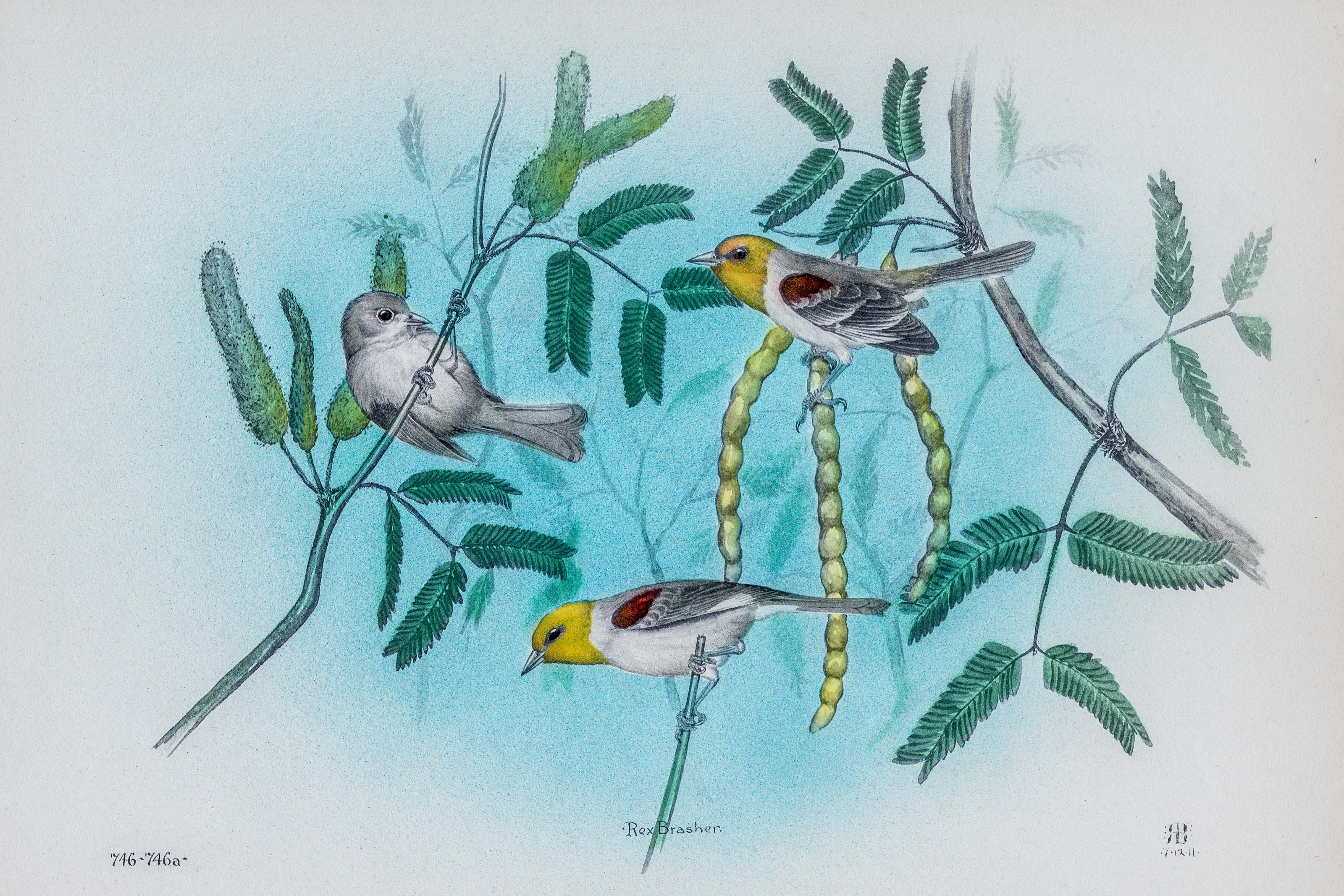
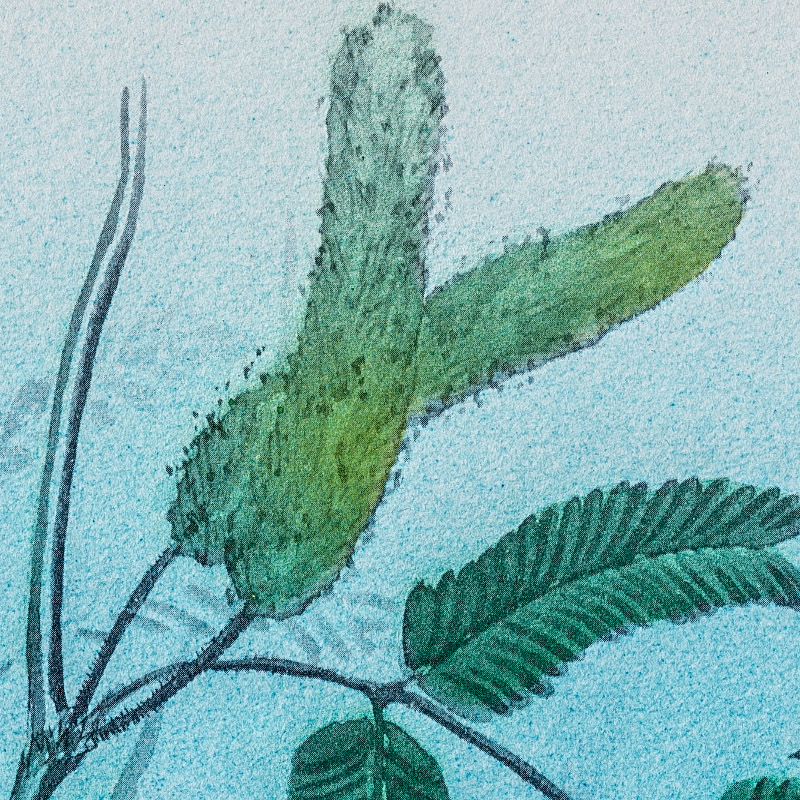
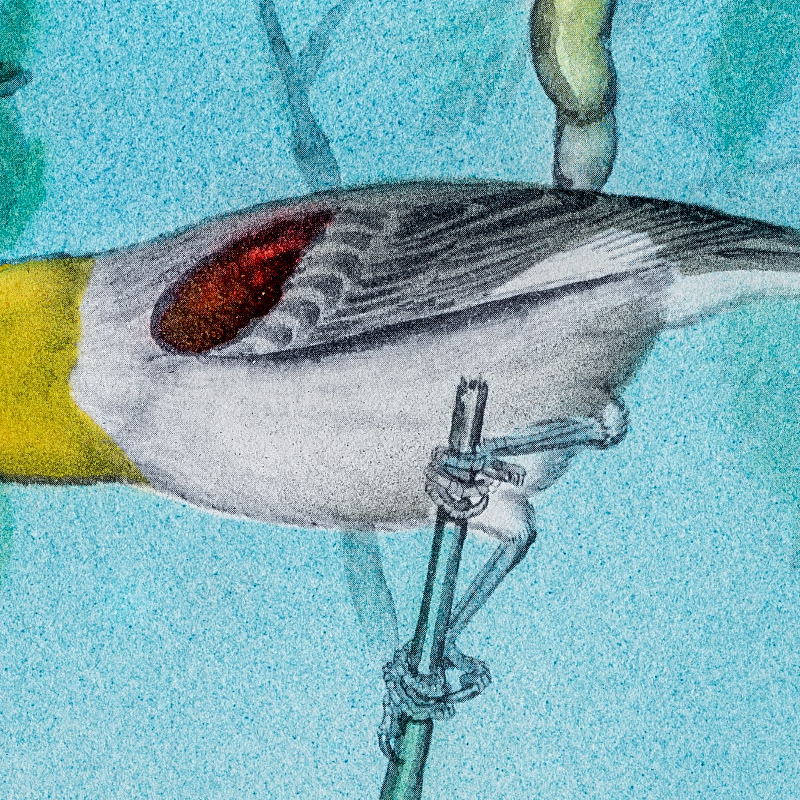
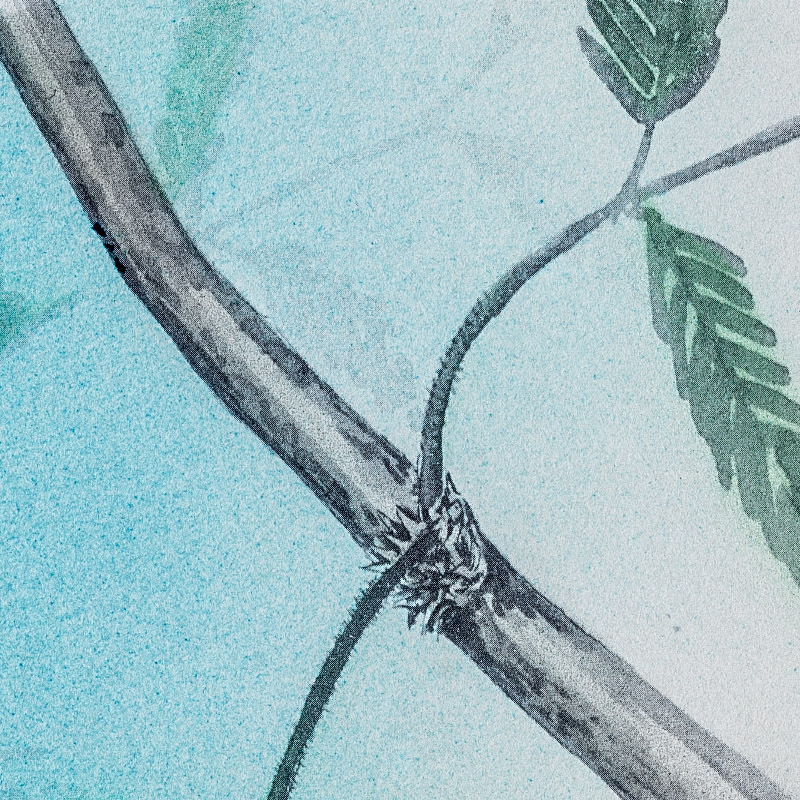
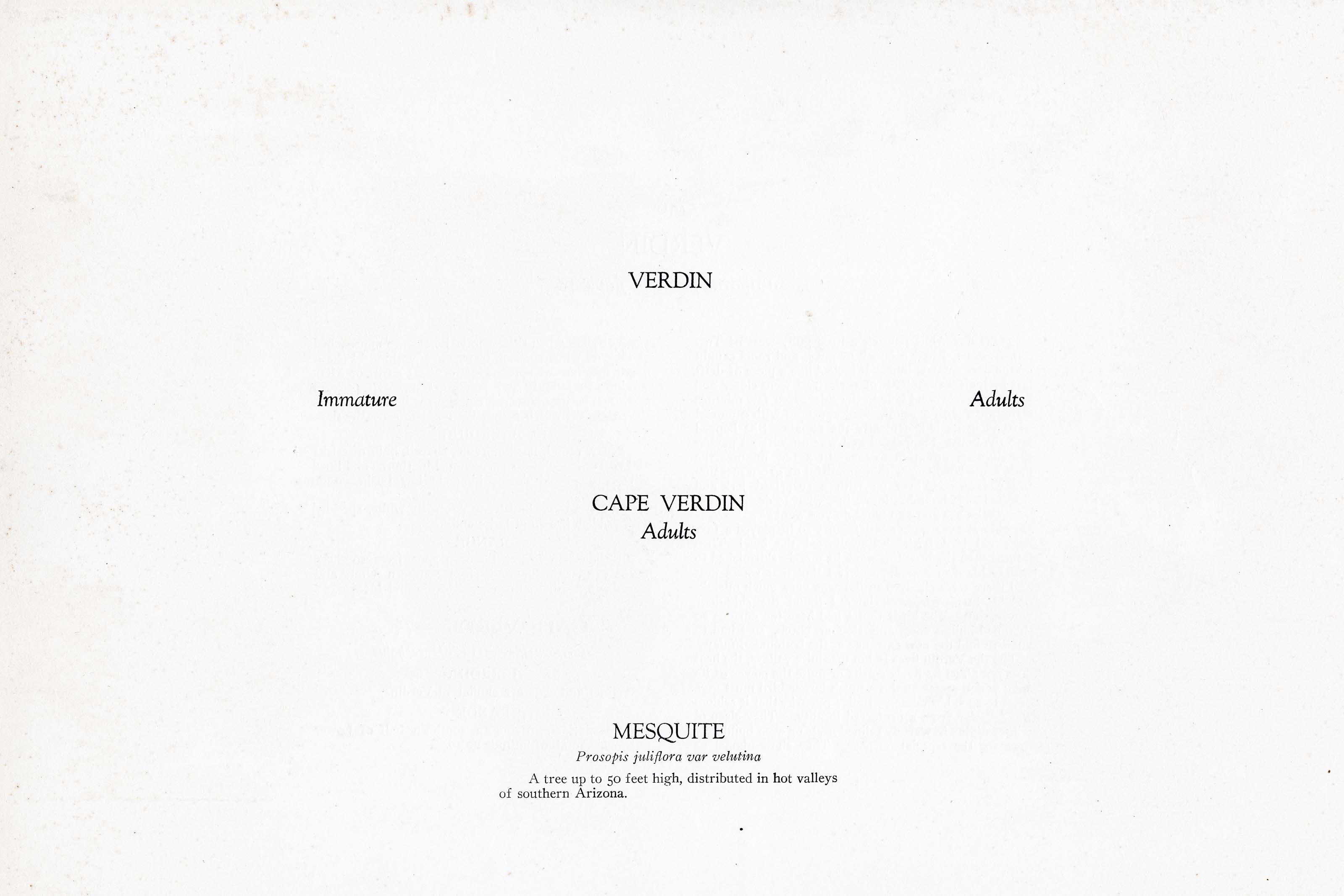
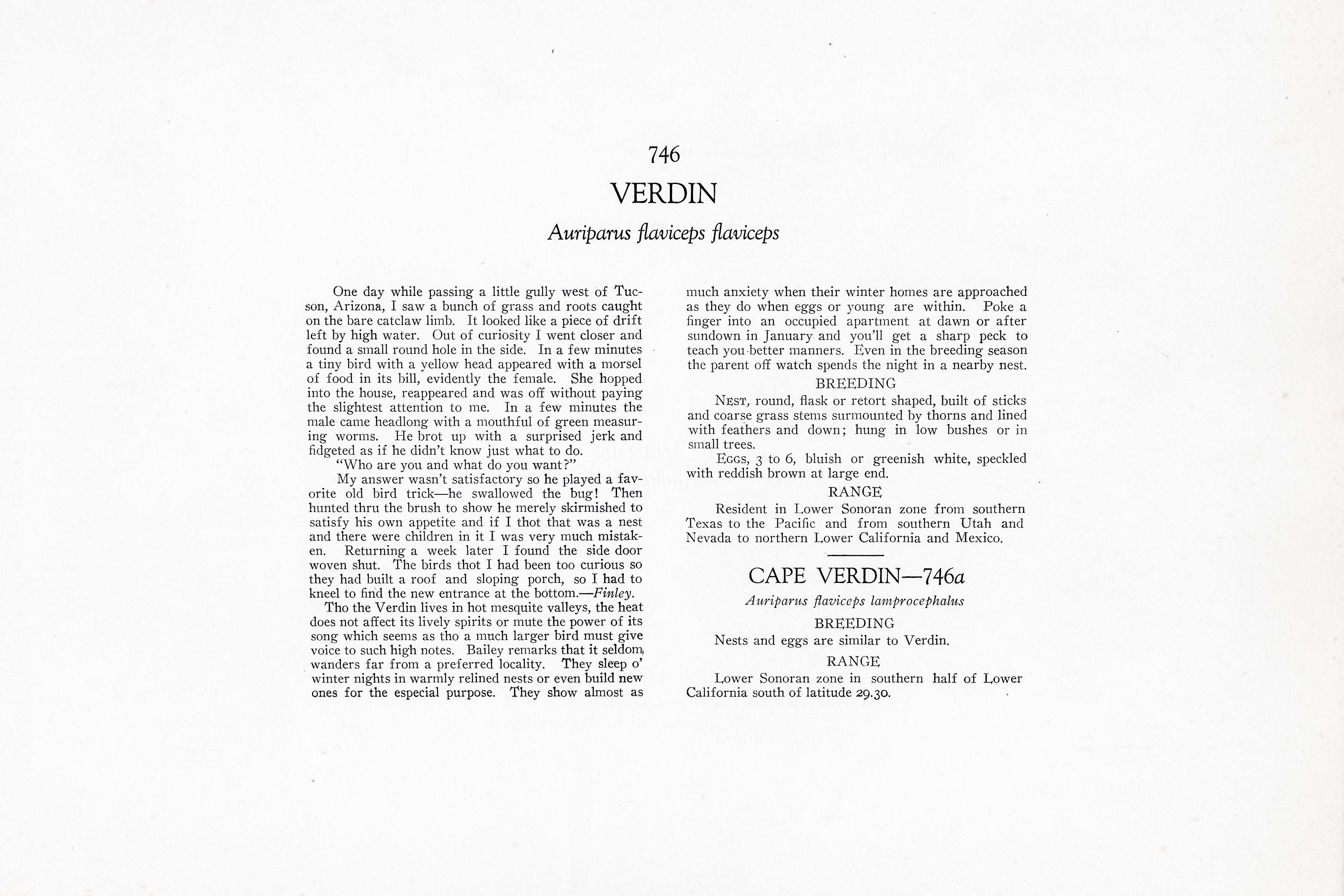

1911
1929
12
746-746a
A team of dedicated board members, volunteers, and student interns has published every page in Volume 9. This volume includes 360 images of paintings and lyrical descriptions of birds, now available online for everyone to enjoy anywhere in the world. This is a monumental task. Each volume requires approximately 400 hours to photograph, edit, transcribe, catalog, and publish online. We need your support to complete this work.
If you're tech-savvy, have a good eye, are meticulous with details, and love structured data, please consider volunteering by emailing us at hello@rexbrasher.org.
We encourage all bird lovers and supporters to consider a monetary donation to support our mission to make Rex's work available for everyone. You can provide a one-time or recurring donation online.
One day while passing a little gully west of Tucson, Arizona, I saw a bunch of grass and roots caught on the bare catclaw limb. It looked like a piece of drift left by high water. Out of curiosity I went closer and found a small round hole in the side. In a few minutes a tiny bird with a yellow head appeared with a morsel of food in its bill, evidently the female. She hopped into the house, reappeared and was off without paying the slightest attention to me. In a few minutes the male came headlong with a mouthful of green measuring worms. He brot up with a surprised jerk and fidgeted as if he didn't know just what to do.
"Who are you and what do you want?"
My answer wasn't satisfactory so he played a favorite old bird trick — he swallowed the bug! Then hunted thru the brush to show he merely skirmished to satisfy his own appetite and if I thot that was a nest and there were children in it I was very much mistaken. Returning a week later I found the side door woven shut. The birds thot I had been too curious so they had built a roof and sloping porch, so I had to kneel to find the new entrance at the bottom. —Finley.
Tho the Verdin lives in hot mesquite valleys, the heat does not affect its lively spirits or mute the power of its song which seems as tho a much larger bird must give voice to such high notes. Bailey remarks that it seldom wanders far from a preferred locality. They sleep o' winter nights in warmly relined nests or even build new ones for the especial purpose. They show almost as much anxiety when their winter homes are approached as they do when eggs or young are within. Poke a finger into an occupied apartment at dawn or after sundown in January and you'll get a sharp peck to teach you better manners. Even in the breeding season the parent off watch spends the night in a nearby nest.
NEST, round, flask or retort shaped, built of sticks and coarse grass stems surmounted by thorns and lined with feathers and down; hung in low bushes or in small trees.
EGGS, 3 to 6, bluish or greenish white, speckled with reddish brown at large end.
Resident in Lower Sonoran zone from southern Texas to the Pacific and from southern Utah and Nevada to northern Lower California and Mexico.
Nests and eggs are similar to Verdin.
Lower Sonoran zone in southern half of Lower California south of latitude 29.30.
A tree (50 feet in height) distributed in valleys of southern Arizona.